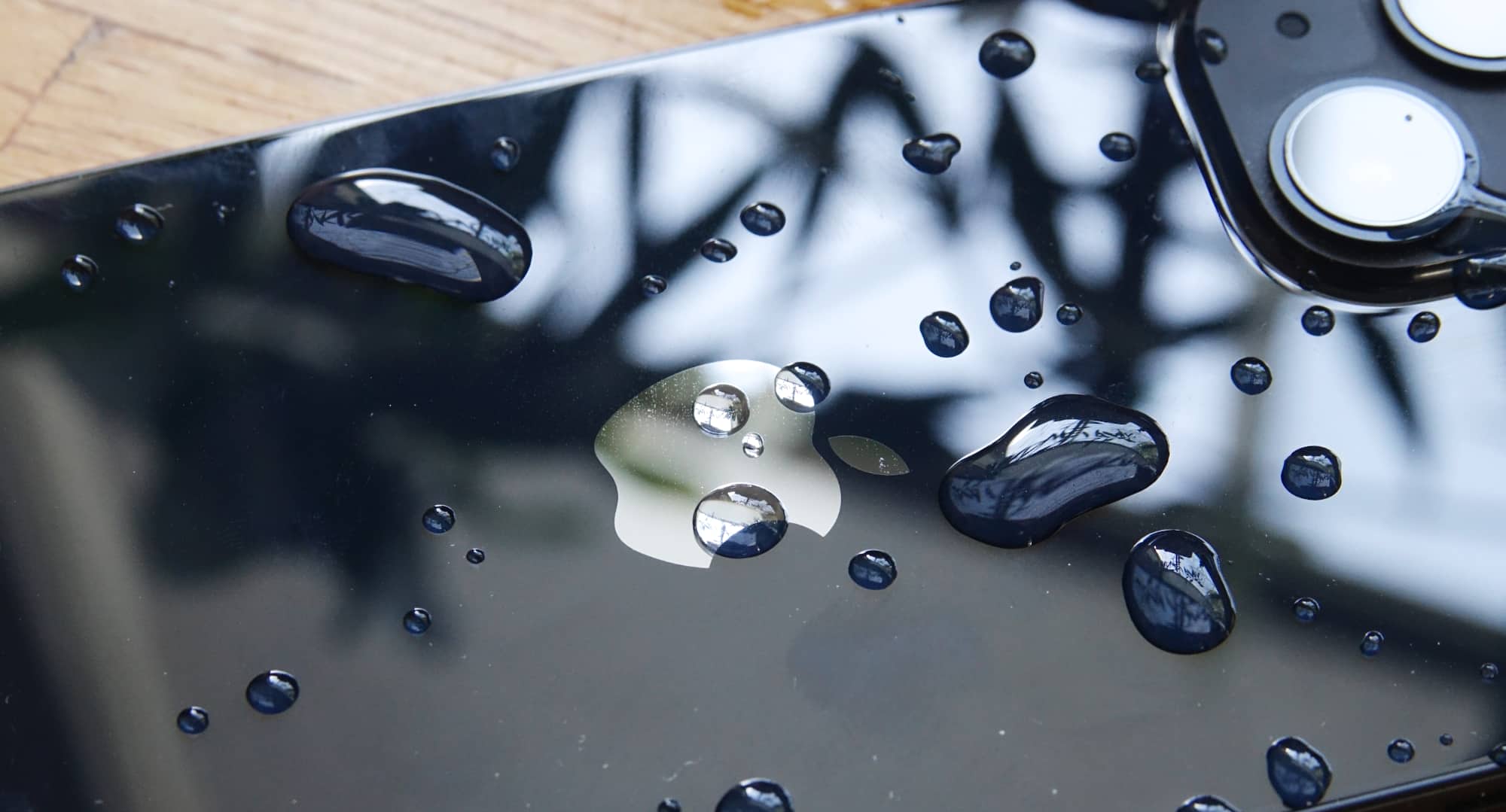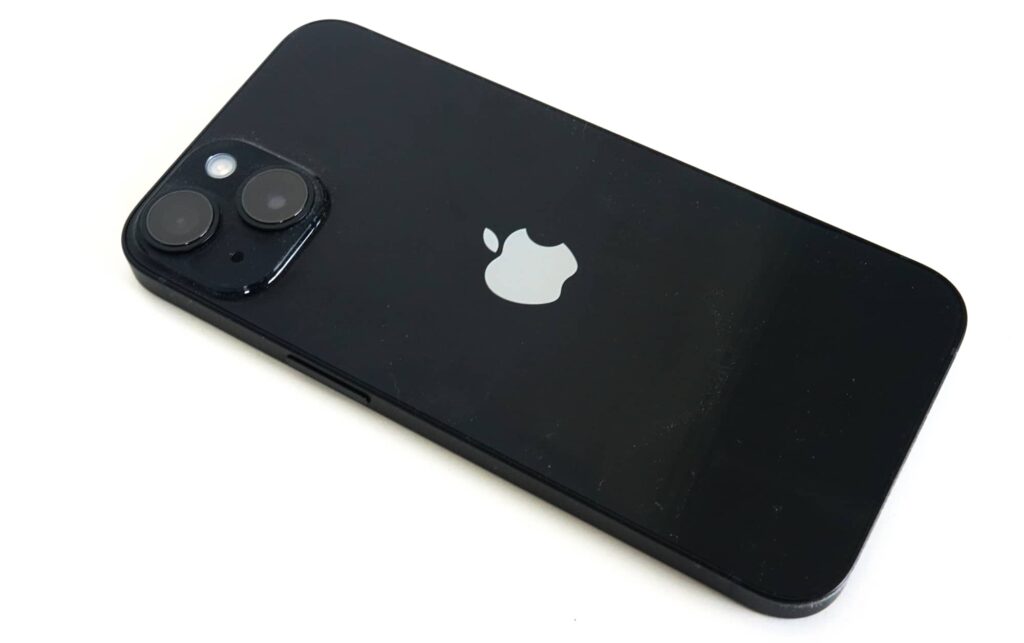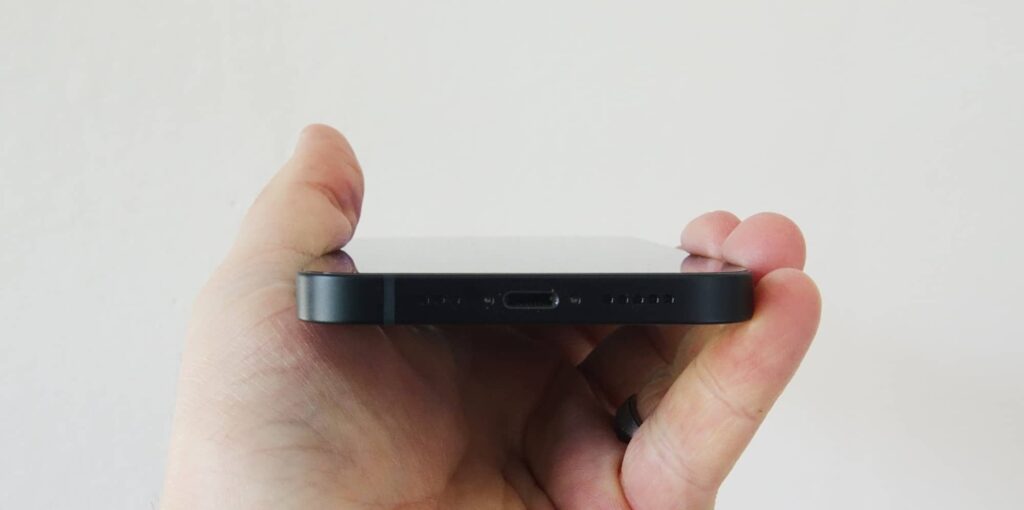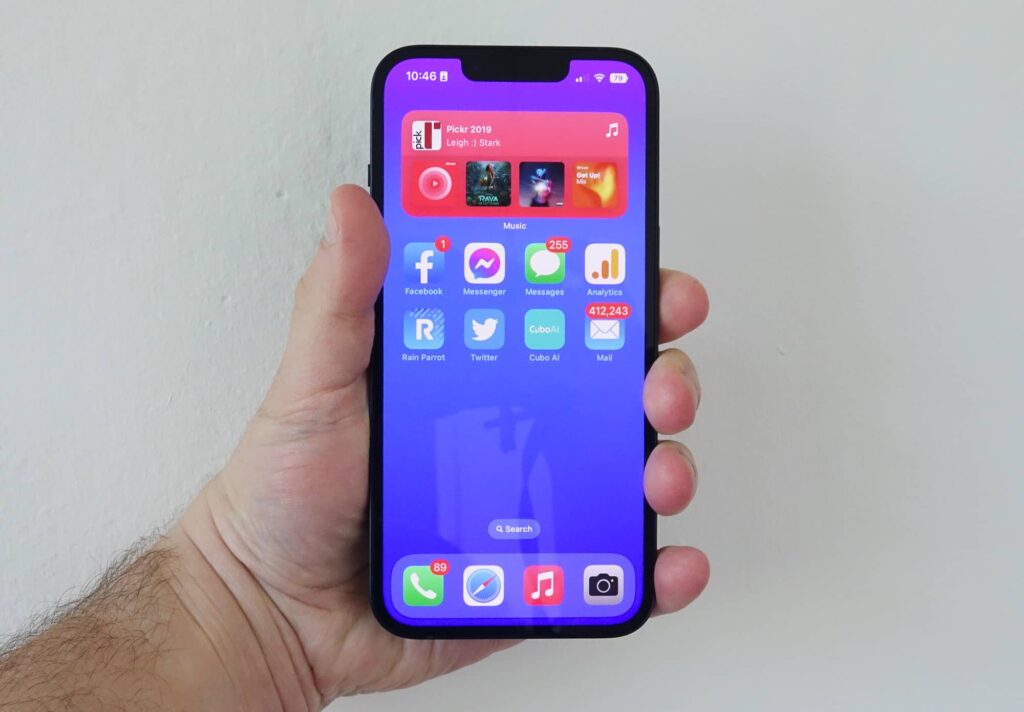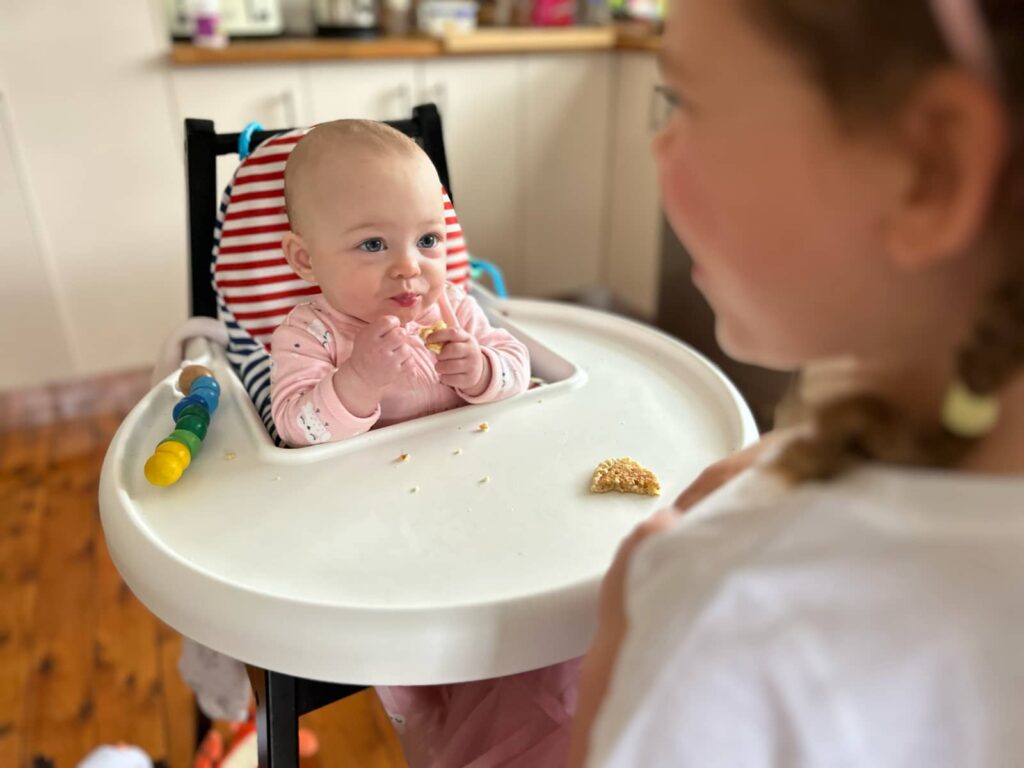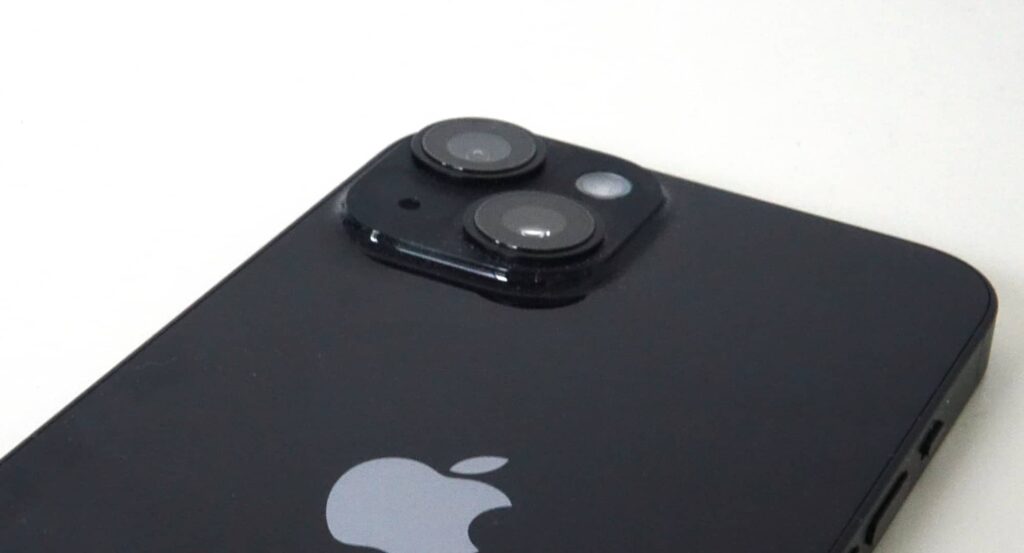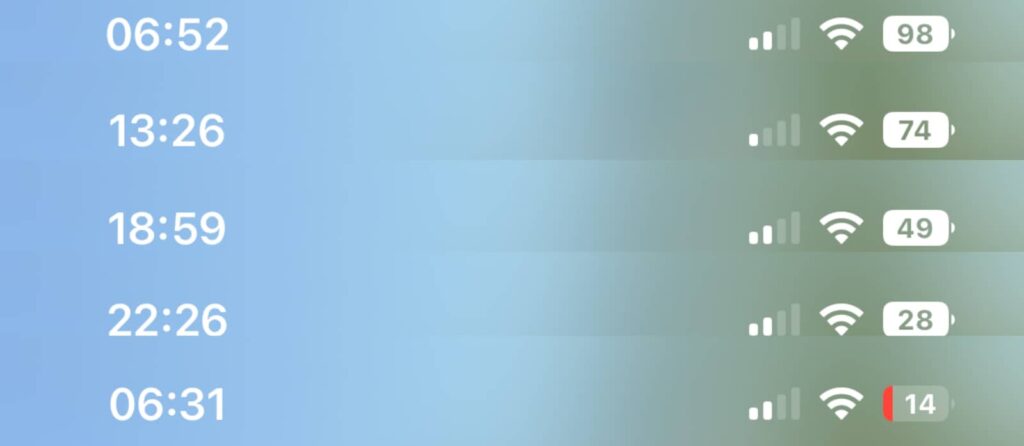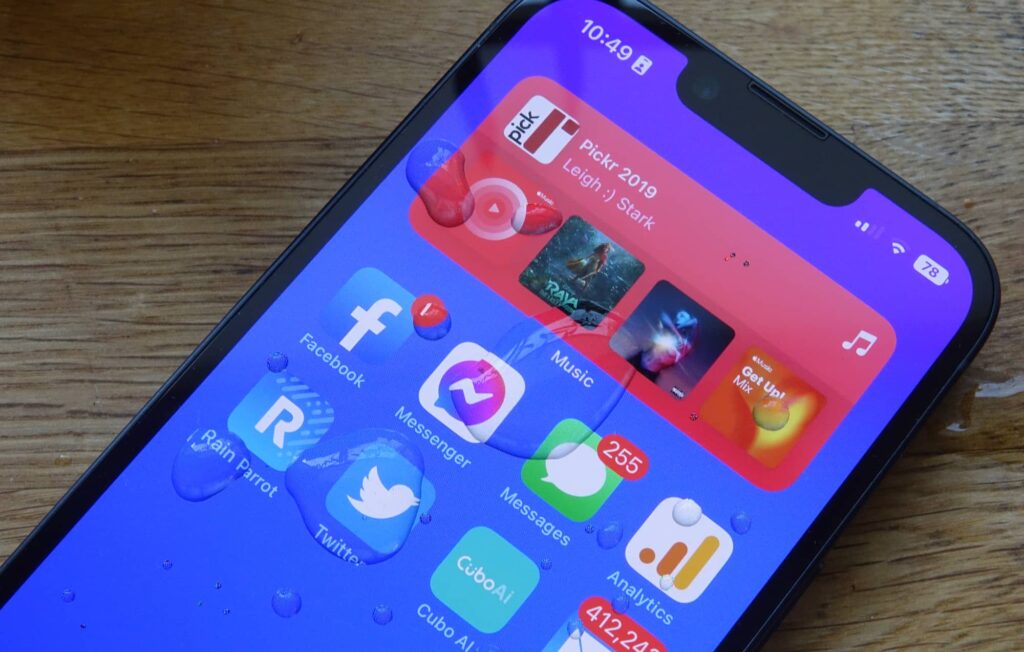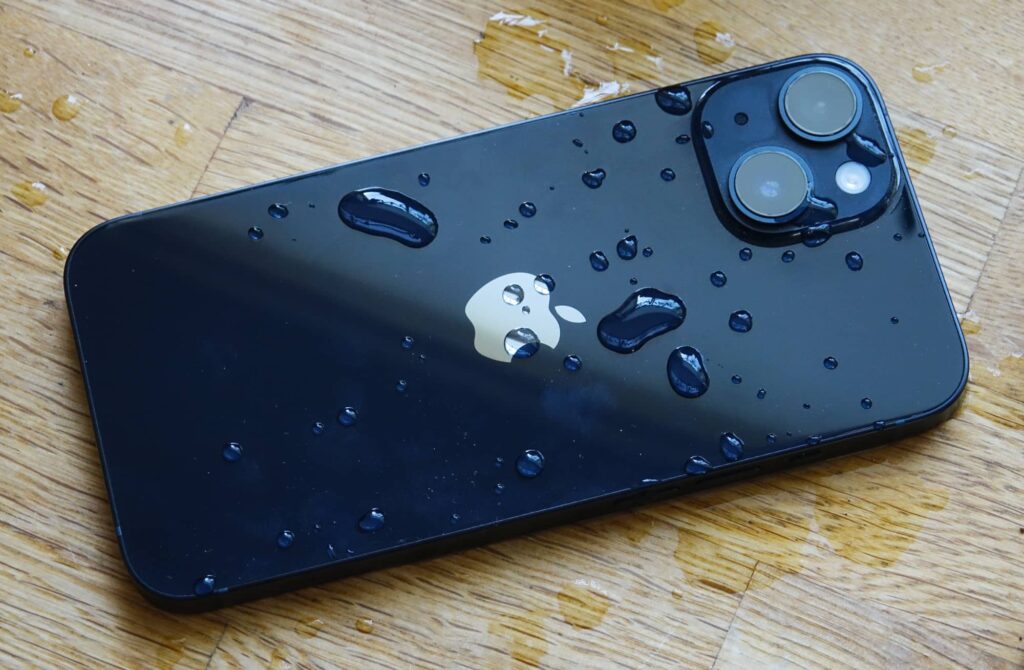Quick review
The good
The not-so-good
All eyes are typically on Apple’s most expensive model, but there’s also one more. Is the iPhone 14 a phone worth considering in 2022?
Design
A new year with a new number, as Apple adds one to “13” and gets a “14”. While a new number graces the iPhone range, a new design does not, with everything largely left the way it is.
The 6.1 inch iPhone 14 looks exactly like its 6.1 inch iPhone 13 sibling, and from the front, it’ll look like the 6.1 inch iPhone 12, as well. You’ll find aluminium edges, glass front and back, with the cameras on the back using the same diagonal configuration of the iPhone 13, too.
And that’s it. Kinda sorta.
As we learned trying to match the cases from the old model to the new one, the buttons are ever so slightly out of alignment between years, and the thickness is different, too. But that’s it.
You’d never know you were looking at an iPhone 13 or iPhone 14 upon simple glance. They’re so close, even experts would struggle to spot the differences.
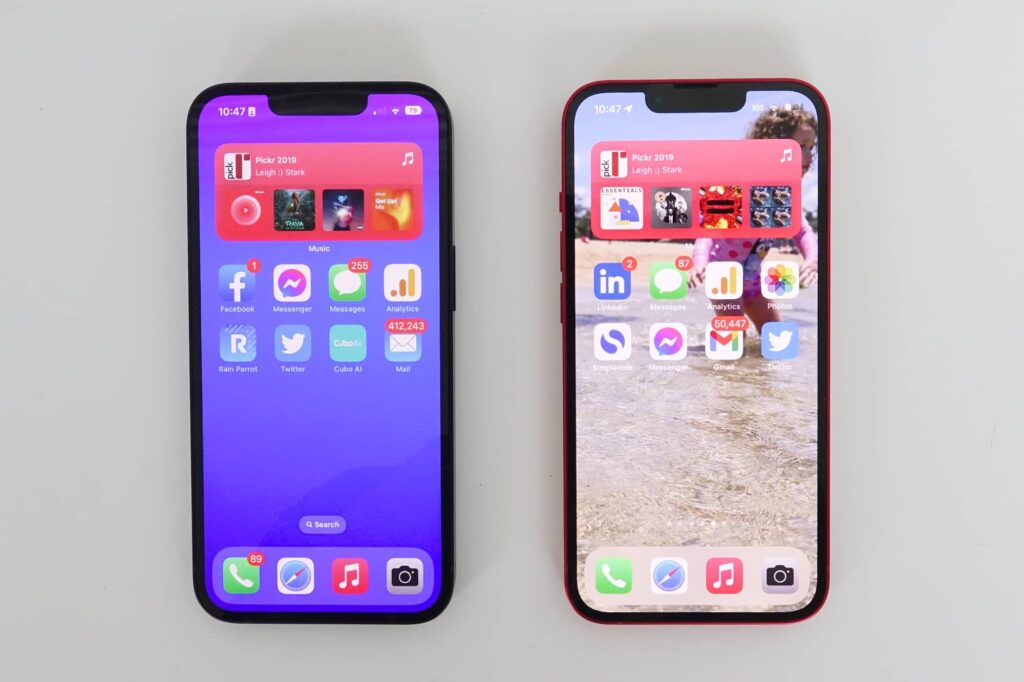
Features
They’re also so close that you may not realise there’s a difference under the hood, because there aren’t major difference at all.
The first thing you’ll see is the screen, which is the same 6.1 inch OLED display as the iPhone 13 before it, complete with the notch at the top. The shelf eats into that screen size, which provides a resolution of 2532×1170, essentially delivering 460 pixels per inch (ppi). There’s support for TrueTone white balancing and HDR, and Apple uses its Ceramic Shield for a strengthened front-glass element, with the back made with just regular glass.
Under the screen, Apple’s A15 Bionic from last year is the chip of choice in the iPhone 14, using a 6-core CPU and a 5-core GPU, plus a 16-core Neural Engine. This isn’t the new A16 Bionic used in the iPhone 14 Pro and Pro Max, but rather the chip recycled from last year, which in the words of Stitch is “still good, yeah, still good”.
The cameras here are similar to the old phone, too, with two 12 megapixel cameras on the back operating for wide and ultra-wide, while the front is an updated 12 megapixel camera with support for autofocus, something Apple’s selfie cameras haven’t seen until now.
You’ll also find a host of wireless bits, such as 5G on the sub-6 technology, WiFi 802.11a/b/g/n/ac/ax WiFi 6, Bluetooth 5, Near-Field Communication (NFC) for Apple Pay, GPS, and the Ultra Wideband tech used with Apple AirTags. The only wired port on the phone sits at the bottom, as Lightning sticks around for one more year.
The Lightning port can be used for wired charging, but there’s also support for wireless charging over Qi and Apple’s magnetic MagSafe technology, with a couple of new features along for the ride you may not even realise are there, such as crash detection and an emergency SOS mode that uses satellites to make calls, but only in the US and Canada.
In-use
If you’ve used an iPhone in the past few years, since maybe the iPhone X in 2017, using this one won’t be any different, either. Built with mostly just screen, the top notch, and a few buttons spaced around the edges, the iPhone 14 will register your face for security and then have you swipe up to open, with other gestures for getting around the phone.
It’s all quite easy, and there’s even a bit of water resistance, with the IP68 dust and water resistance providing some ruggedness, though not likely enough to survive a fall. It can handle a drop in water, but if you want to keep the glass from scratches or breaks, you may want more than the screen’s Ceramic Shield.
Essentially, that design hasn’t changed, and that means its use and resistance levels haven’t either.
Performance
With a design near identical to the iPhone 13 before it, and an identical way of using it, you probably won’t be surprised to learn that the guts of the phone is largely the same, as well.
That’s not bad, but it’s not a major change, and that means the performance of the iPhone 14 doesn’t see significant improvements. From what we can tell, the iPhone 14 keeps the A15 Bionic from last year, but instead uses the 5-core GPU edition from the iPhone 13 Pro.
Given Apple retires the old Pro model at the end of each year, this should come as little surprise: the iPhone 13 Pro’s chip has basically made its way into the less expensive iPhone 14, but things are basically the same.
Games and apps will run with solid performance, and should be fine for years to come, but the 14 Pro has the edge with the latest chip, the A16 Bionic.
Over in the world of 5G, the iPhone 14 still ticks along quite nicely, delivering 5G on the sub-6 technology, as Apple skips mmWave support in Australia, even if it offers it in the US.
That won't make any major difference to most buyers, though; we found speeds as high as 280Mbps in our 5G tests on the Telstra network in Sydney, though yours may be better depending on where you are.
Camera
With the design, use, and performance pretty much the same, you will be pleased to know something has changed, and it's the camera. Or more specifically, cameras.
First let's talk about the rear cameras, which isn't the 48 megapixel standard camera on the Pro model, but rather a 12 megapixel main camera with an F1.5 aperture. You'll find the sensor-shift optical image stabilisation last seen in the 12 Pro, while the second camera is a 12 megapixel ultra-wide set to F2.4.
This isn't the complex three camera system of the 14 Pro, but rather a slightly tweaked and updated model that uses the complex system of processing that is Apple's Photonic Engine to export the image.
It's an update of sorts with slightly better lighting in low-light images than the excellence found in the 13, and feels more or less on par with what the 13 Pro did beforehand, maybe with a little more oomph.
Cinematic's video portrait mode has a little more control, though, with an increase from 1080p to 4K, and there's also an "action mode" button for the standard video mode that can stabilise the motion while capturing, supporting up to 2.8K at 60 frames per second. Otherwise, there's Dolby Vision HDR for video, and it looks great.
Which is what the images look like, as well. Crisp, nice, and easy on the eyes, images in daylight look a treat, and there's also a decent portrait mode, too, capable of some algorithm-assisted backgrounds and edges of heads and hairs. It's a solid emulation of what a low-light lens can do, and requires little to no skill to use, though if you have some, it will be appreciated, no doubt.
There are also changes to the front camera, which now handles autofocus to let you snap sharper shots of your visage. That's one of the main features shared between the iPhone 14 range, and it's here, as well, making for nice shots all around.
Battery
Tested over the course of a week, we found the iPhone 14 battery life was more or less the same as the iPhone 13, and close to what the iPhone 14 Pro could do, also.
And that means most people will likely need to charge the phone nightly, with a maximum of a day the normal runtime for an iPhone 14, though you could get a little more if you wanted to squeeze it.
We found 24 hours of battery life was in fact possible with around 4 to 5 hours of screen time throughout. If we switched on low power mode, we could probably get it going a little longer, but not much has changed here, and you'll likely rely on a nightly charge.
Value
Our biggest quibble with the iPhone 14 comes down to the value it offers, because it isn't much of a change from the iPhone 13. The device information during benchmark even implies it's part of the iPhone 13 range, which it definitely feels like it might be.
The design is the same. The chip is largely the same. The feature set is more or less the same. The screen is the same. Our recollection of the battery performance is the same, too, which doesn't come as much of a surprise: the phones are largely the same.
The only major differences between 2021's iPhone 13 and the 2022 iPhone 14 are the improvements to the camera on the front and back, plus the crash detection and support for satellite communications if you happen to be in America.
In short, the changes are small, and so is the price difference. The iPhone 14 starts at $1399 for 128GB model, while the older iPhone 13 now starts at $1229 for the 128GB model. That's a difference of $170 for something that has very, very minor changes, and certainly not the sort you're going to recognise.
Frankly, we'd save the money and opt for the iPhone 13. There's really not that significant a reason to choose the newer model over the old one.
What needs work?
The feeling of "why choose this phone" is probably the greatest issue with the iPhone 14.
There are ample reasons to consider the more expensive iPhone 14 Pro: the camera is better, the screen is better and includes the Dynamic Island, the always-on display is a great inclusion you only find on the Pro models, and the design is better and more durable there, too. The iPhone 14 Pro is a much, much better proposition, even if you do pay extra for it.
But the iPhone 14 is a little like yesterday's news. It's old but also new. It's a minor refresh, and that's it.
Overseas in America, there's a more obvious difference, with support for satellite calls when you need them in an emergency, but not here in Australia. The tech should work if you take an Australian iPhone 14 and get lost in the middle of the US, but bring any iPhone 14 to Australia, or New Zealand, Europe, South America -- anywhere outside of the US or Canada, really -- and it won't. So for most Australians, the emergency satellite call tech won't work, and is largely irrelevant.
Crash detection is more relevant, but it's a feature we hope you never have to use, and it's there on all models of iPhone 14, plus the new Apple Watch, as well.
But that's it. There isn't a whole lot of "new" in the new iPhone 14.
This isn't your typical iPhone refresh where the model that isn't the "Pro" gets a similar chip with the one less camera in a different design; the iPhone 14 is the iPhone 13 with the chip from the iPhone 13 Pro and some tweaks to the camera. Crash detection is also there as is a front-facing camera with autofocus, but that's largely it for Australians.
We're pretty sure the iPhone 14 isn't a direct upgrade path for many people, but we'd probably more closely consider the iPhone 13 over it. Saving money is always nice, and the changes aren't hugely significant between the models either way.
Final thoughts (TLDR)
Between the lack of obvious differences and the questionable value, it's difficult to recommend the iPhone 14.
It's not that the iPhone 14 is bad, because it's not. This is a great phone, though it's one where the differences are largely negligible.
The problem is there aren't really any majorly compelling reasons to pick the iPhone 14 over the iPhone 13, and you'll save money in that approach, as well. And if you want a proper upgrade, we'd tell you to consider the iPhone 14 Pro, which is a much better phone with practically the same battery life.
We're not entirely sure who the iPhone 14 is for. It's still a nice phone, but either way, there's probably a better iPhone for you, whether you intend to save a few bucks on something nearly the same, or if you want an actual update.



